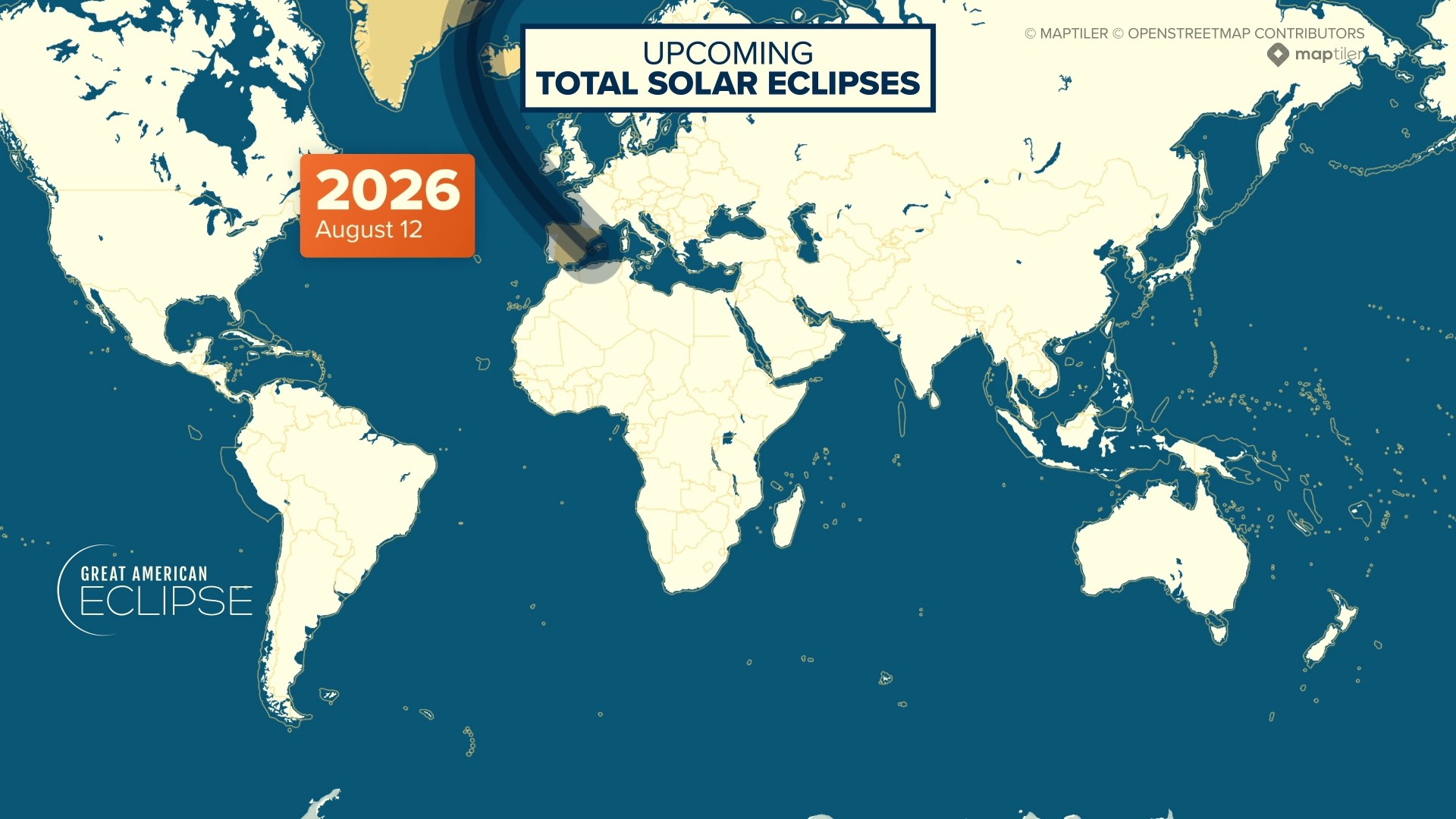SCRANTON, Pa. — CLICK HERE FOR A LIST OF CERTIFIED ECLIPSE GLASSES.
We are only a few weeks out from the spectacle of a lifetime: a total solar eclipse! On April 8th, the Sun, Moon, and Earth will align in a complete cosmic calibration. As the moon moves between the Sun and Earth, it will cast a shadow on a vast part of Earth's Western Hemisphere, including the entire U.S.


All 50 states will see at least a partial eclipse, when the sun appears as a crescent shape or as if the moon has "taken a bite out of the sun." An estimated 652 million people live in an area that will be able to see the partial eclipse.


Along a narrow ~100-mile wide strip of land stretching from Mexico, northeast through Texas, Illinois, and all the way up to Maine and Newfoundland, the moon will completely cover the sun.


Here, revelers will experience totality, and will stand fully within the Moon's umbra, or inner shadow. Many large U.S. cities will be plunged into darkness during the middle of the day. San Antonio, Austin, Dallas, Little Rock, Indianapolis, Cleveland, Montréal, and Burlington (VT), all fall along the path of totality. Here in our area, the closest cities on that path of totality are Erie, Rochester, Buffalo, and Syracuse. Only 0.5% of the world's population, or 43 million people (including populations from the U.S., Mexico, and Canada), are lucky enough to live along this path.


During totality, clouds permitting, you will be able to witness a gaping "hole" in the sky (the moon covering the sun), a white halo around the sun called the corona, or the sun’s outer atmosphere, a 360° panoramic sunset, and planets and stars become visible in the middle of the day. Since we are approaching a solar maximum, based upon the increased number of sunspots on the surface of the sun, the corona will likely appear bright, sharp, and pointed, whereas during the 2017 Great American Total Solar Eclipse, the sun was far from the peak of its activity cycle, and the corona appeared thin and wispy.


If skies remain cloudy during totality, it may still be possible to witness the corona, if the clouds are thin enough. If the cloud deck is too thick, you will not be able to see the eclipsed sun, but you will still experience several other environmental changes.

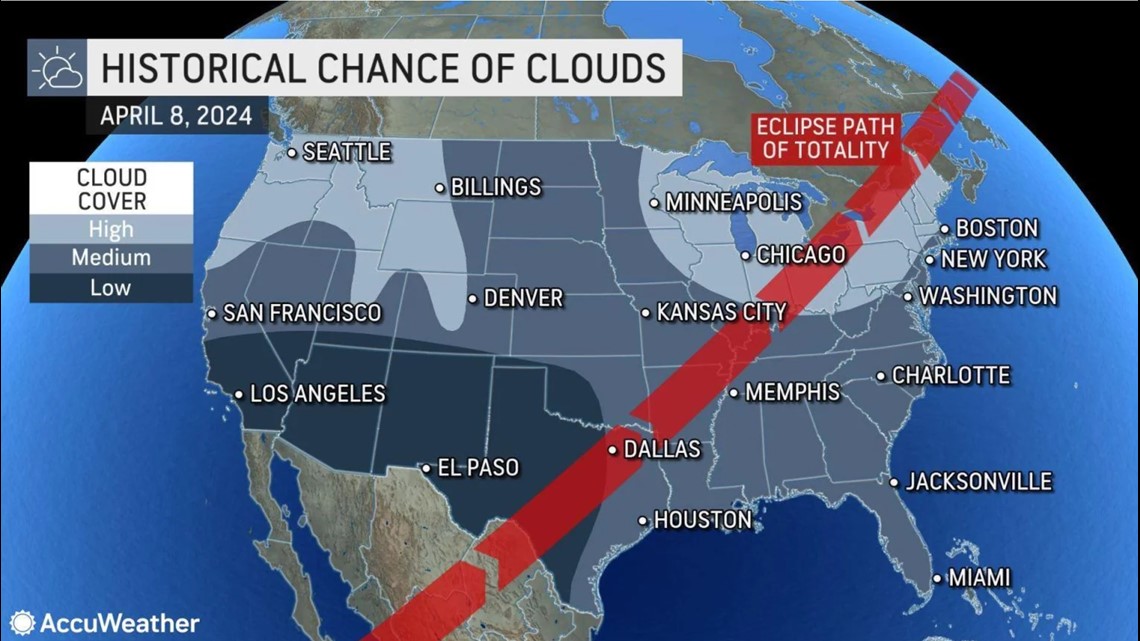
During totality, regardless of clouds, temperature drops as we cover our light source, sometimes as much as 10-20°. Animals and insects act strange in the moments leading up to, during, and following totality. Birds swarm and squawk in the minutes before totality, and fall silent during the darkness. Bees return to the hive, cows go back to the barn, chickens roost, and fish come up to the surface. During an eclipse, some people even act peculiar: there are reports of some bursting out into tears as they feel an enormous sense of overwhelming emotions during totality.
In the moments immediately preceding and following totality, some fascinating optical phenomena can occur. Since the moon is not a perfect sphere, right before totality, the last few rays of light pass through the deep valleys on its surface. The result is a string of glowing "beads" of light called Baily's Beads, which disappear one by one as those valleys cover the sun. In the final 10 seconds prior to totality, just one brightly glowing bead remains, called the Diamond Ring.

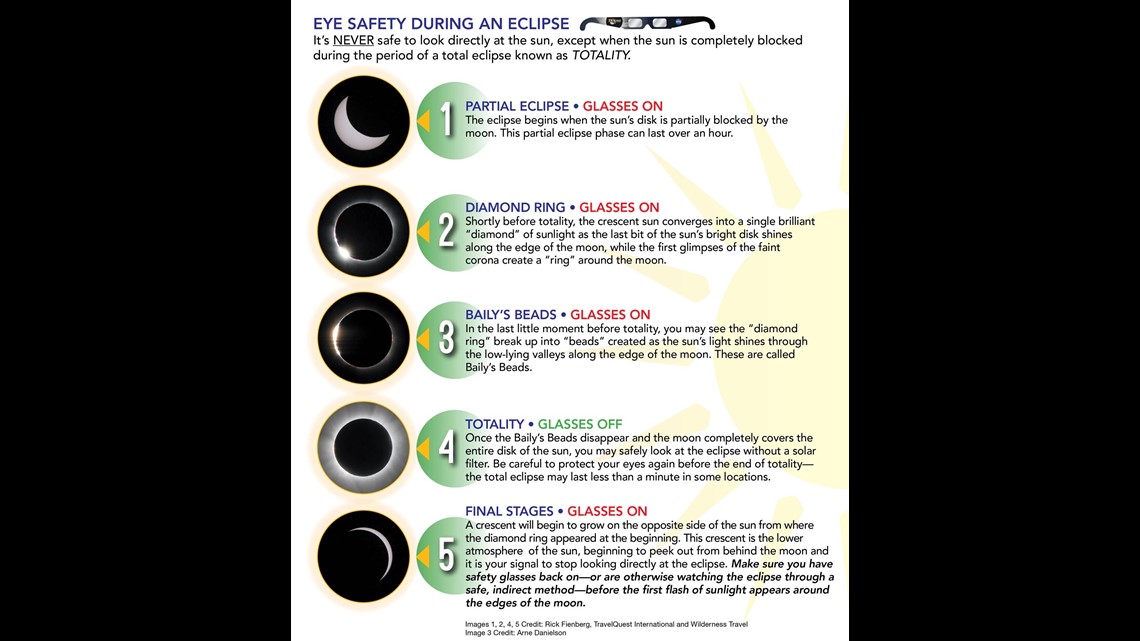
On the ground, shadows sharpen and become more detailed as more and more of the sun becomes obscured. Within minutes of totality, fast-moving, undulating, thin waves of light and dark called shadow bands can flow across the Earth's surface, a product of the interaction of the dwindling light from the sun and Earth's atmospheric perturbations.
All of Central and Northeastern Pennsylvania will see over 92% totality. You will notice a significant diminution of light, and the day will take on an eerie tint as the sun is reduced to a slim crescent. Temperatures will definitely drop by several degrees. Animals will begin to prepare for night. But none of the optical phenomena described above—Baily's Beads, the Diamond Ring, shadow bands, the corona, or full darkness—will be visible here.

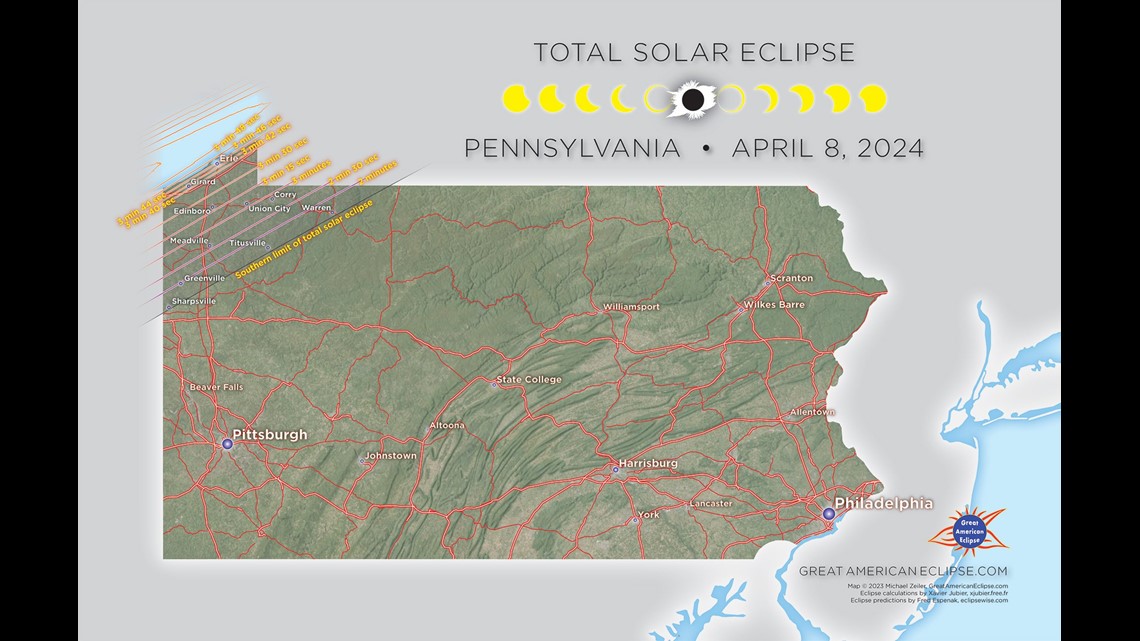
If you are in Scranton, there will be a deep partial eclipse, with approximately 95% totality. The closest city within the path of totality is Syracuse—just a 2 hour drive from Scranton. There you will be able to stand in darkness for 1 minute and 27 seconds. Since Syracuse is on the outer fringes of the path of totality, full coverage of the sun won't last as long. The closer to the centerline of the totality band you can position yourself, the longer time you can spend in totality. Rochester is much closer to the centerline, and will spend over twice the amount of time in darkness—3 minutes and 40 seconds.

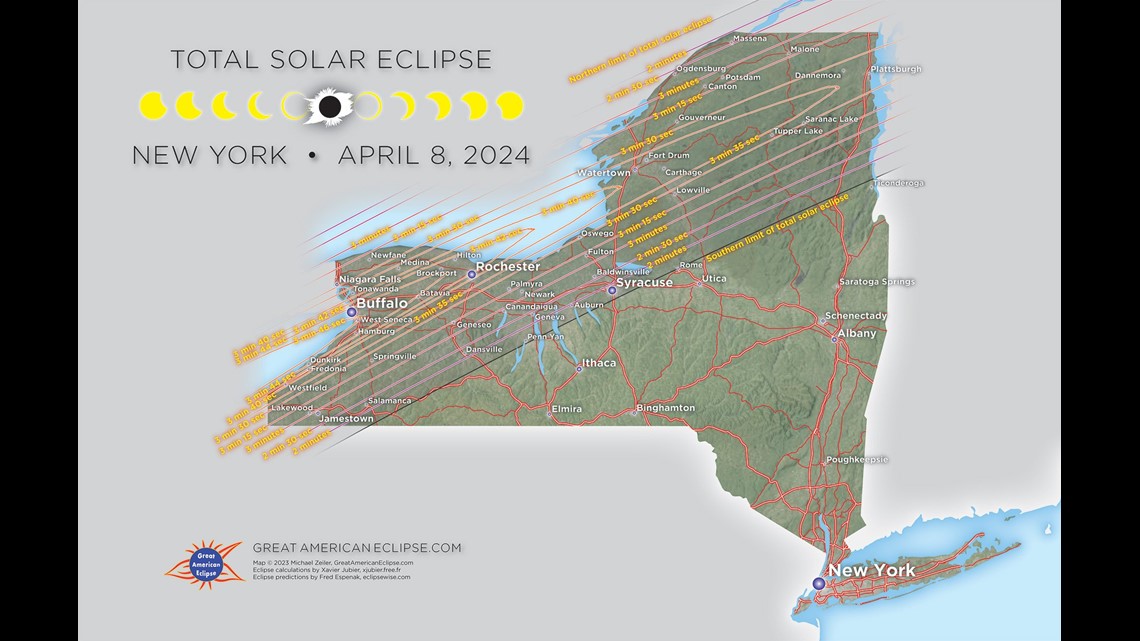
Williamsport will be in 96% totality. It is a 2 hour and 30 minute drive to Rochester, a 3 hour and 15 minute drive to Buffalo, and a 4 hour drive to Erie. All three cities will see about 3 minutes and 40 seconds of totality just after 3 PM EDT. Other locations' coverage percentage and time in darkness can be found by plotting points on this map.

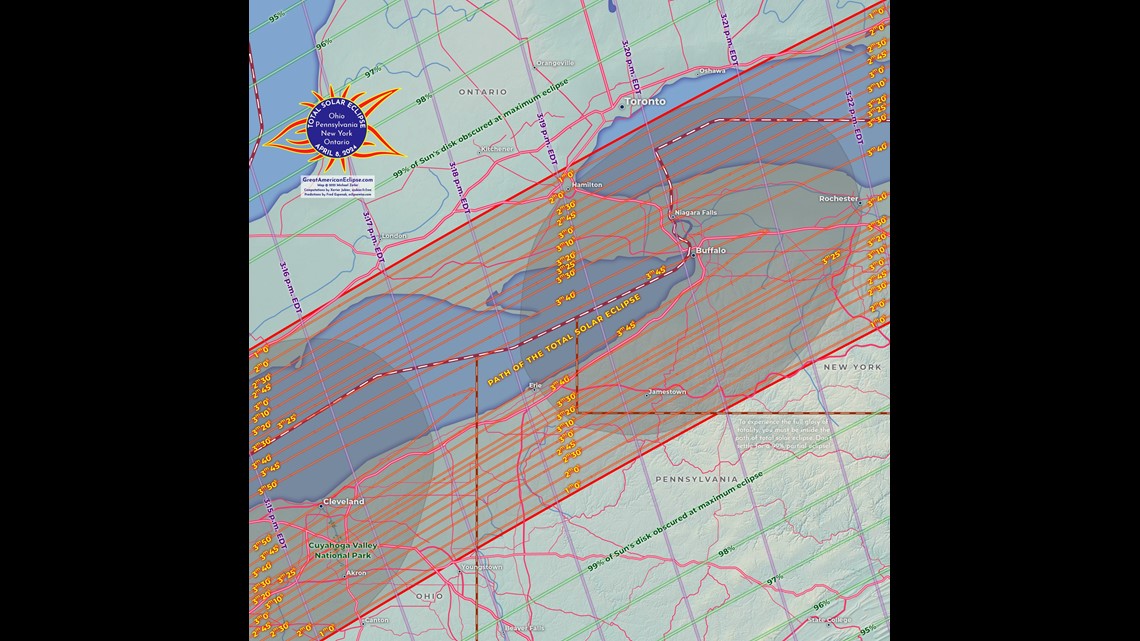
Unless during totality, it is NEVER safe to look directly at the sun without the proper eye protection. You can damage your retinas. In order to view a solar eclipse safely, you must use special ISO 12312-2 certified eclipse glasses, which be purchased in stores and online, but be careful of fakes which lack the certification on the inside arm of the paper glasses. Visit the American Astronomical Society website for a list of reputable solar eclipse viewer and filter vendors.
Total solar eclipses only happen once every 1 to 2 years, and each traces a unique path along a different part of Earth, often over the ocean or land where there is low population density. For any given point on the planet, the path of totality only aligns on average once every 375 years. The next total solar eclipse will take place in Greenland, Iceland, and Spain on August 12, 2026. Excluding an eclipse only visible in Alaska in 2033, the next time a total solar eclipse will be visible within in the United States at all will be 20 years from now, and the path of totality only inches its way into the Northern Plains (Montana, North & South Dakota). The next total solar eclipse that will streak its way across the entire United States won’t be until 2045. Don’t let this opportunity of a lifetime pass you by. Make plans now to see the one this April!


